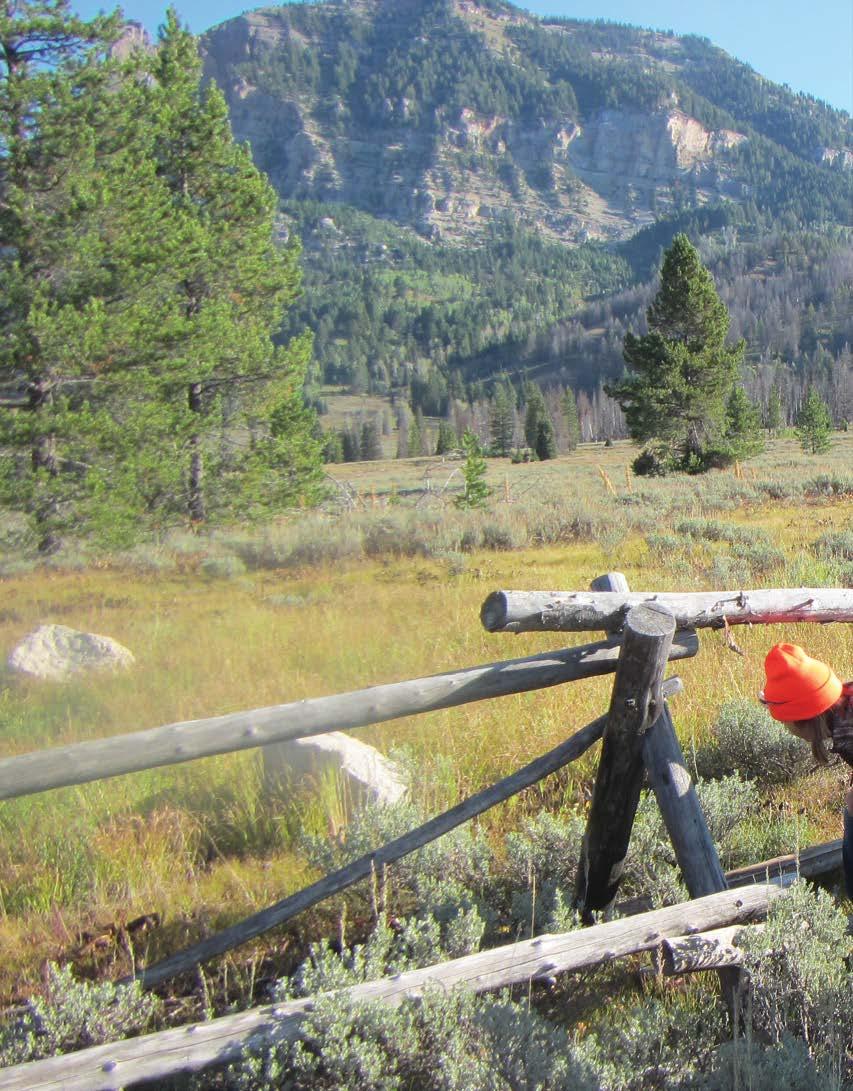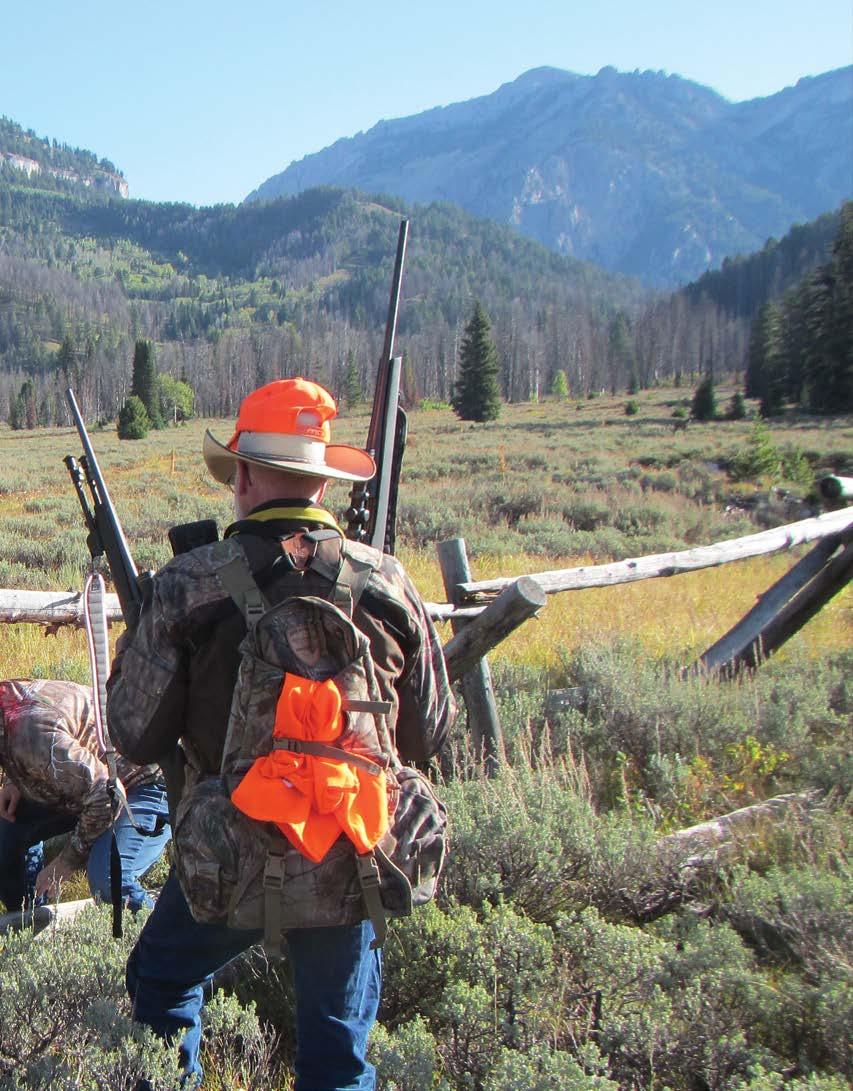
6 minute read
CONSERVATION POLICY COLUMN
AMERICA THE BEAUTIFUL INITIATIVE
REGULAR MEMBERS CO-CHAIRS CONSERVATION POLICY COMMITTEE
The difference between conservation and preservation is lost on most people. Clearing up any confusion between those terms and acting on it will promote conservation actions that truly benefit biodiversity and wildlife habitat. In doing so, it will make a place for sensible natural resource management.
There is a similar problem with the term environmentalism. It conjures the image of radical anti-development protesters chaining themselves to trees. This also clouds understanding. It is what many first thought of when they heard about the international 30x30 initiative to protect 30 percent of all land and water by 2030 to reverse a trend of global biodiversity loss. What the Biden Administration is doing with the 30x30 idea is an opportunity for clarity and progress. In the words of our founder Theodore Roosevelt, “Conservation means development as much as it means protection.” He was saying conservation is the big idea in which preservation plays a part. Conservation and preservation are not opposites. The Biden Administration heard this message clearly from the hunting and fishing community, and it shows. In the May 2021 report Conserving and Restoring America the Beautiful, President Biden’s conservation cabinet officers emphasized “...the notion of ‘conservation’ of the nation’s natural resources (rather than the related but different concept of ‘protection’ or ‘preservation’).” They said this recognizes “...that many uses of our lands and waters, including working lands, can be consistent with the long-term health and sustainability of natural systems.” Credit goes to the Congressional Sportsmen’s Foundation for rallying hunters and anglers behind the right view on conservation through the HuntFish30x30 campaign. The Boone and Crockett Club and many members of the America Wildlife Conservation Partners joined under this banner to engage the Biden Administration with our views on what should “count” toward 30x30. Our community made the case that hunting and fishing access, as well as other well-managed and sustainable activities with sustainable management goals, should count. The Administration’s agreement is more than just a rebrand from the 30x30 slogan to what they now call the America the Beautiful Initiative (ATB). It is now the first attempt in the history of American conservation to set an overall goal for the country’s many conservation efforts. After more than 100 years—during which the Club led the creation of many agencies and programs—it is time to define what we are trying to accomplish and why.
Conservationists have always said their goal is something general. Aldo Leopold said, “Conservation is a state of harmony between men and land.” Gifford Pinchot said, “Conservation means the wise use of the earth and its resources for the lasting good of men.” Many others have said in various ways that the restoration or maintenance of ecosystems should be for the benefit of present and future society. These general ideas all justify the many works of federal, state, and private conservationists; but, none of these ideas direct how much and what kinds of that work should be carried on and where. ATB has the potential to move the country toward answering those questions based on meaningful numbers. Done properly, for example, this will include an objective for big game migration corridors. The purpose of functioning corridors is far more than ensuring healthy elk, deer, sheep, and moose populations. As these species move through ecosystems, they become the arteries of protein that drive those entire systems. The ATB report specifically named corridors as a conservation objective. Corridors and other specific objectives will be considered as the Administration takes the next step for ATB, which is the creation of an American Conservation and Stewardship Atlas to show where and how much conservation is happening. This will require an update to existing data in the Protected Areas Database (PAD) of the U.S. Geological Survey. That dataset describes protection rather than conservation. It classifies protection only by the types of activities allowed, not conservation value. For example, the most protected are national parks and wilderness areas. The least protected are private lands, whether developed or not. National forests and other managed lands are placed in between. ATB needs new categories. First, everything on the Atlas needs to be backed by a commitment to produce measurable conservation value and by money to carry out the commitment. Then, categories can distinguish among the variety of approved uses, the types of ecosystems, and the communities of citizens
near enough to visit. For instance, a city park may inspire urban people with a conservation interest more readily than a distant wildlife refuge. On this basis, the country can better evaluate the progress of our conservation strategy. And we will not be trapped by an arbitrary number like 30 percent. We will be guided by meaningful questions such as what are we doing, how is it going, and what can we try next. This is why the Club recently commented to the Administration that the ATB Atlas should count the multiple-use lands of the Forest Service and the Bureau of Land Management. These lands are managed under legally binding requirements for habitat health and longevity. Working ranches and farms under Farm Bill contracts also fit the requirement of financially backed specific conservation commitments. The Boone and Crockett Club is excited by the prospect that—after more than 100 years—the American conservation strategy will have a “national goal for the stewardship of nature in America.” To realize the promise of this vision, the goal must direct efforts toward clear purposes. This will take us to the fullest understanding and achievement of conservation in America. n In the words of our founder Theodore Roosevelt, “Conservation means development as much as it means protection." Aldo Leopold said, “Conservation is a state of harmony between men and land.” Gifford Pinchot said, “Conservation means the wise use of the earth and its resources for the lasting good of men.”
full article online
The Boone and Crockett Club and 44 other Hunt Fish 30x30 organizations submit formal recommendations to the Biden administration concerning the “America the Beautiful” Initiative’s American Conservation and Stewardship Atlas.
JOIN US ON THE TRAIL LESS TRAVELED.
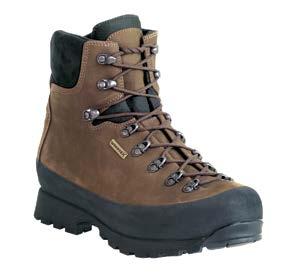
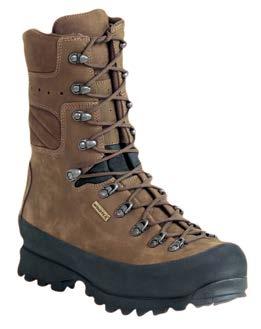
Photo Rob Gerstner, High Mountain Archery ©KENETREK, LLC 2022
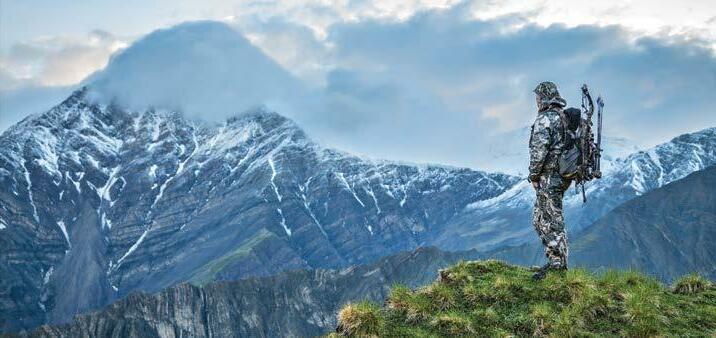
DON’T JUST TAKE OUR WORD FOR IT...
I put my Kenetreks (and myself) to the most brutal test I ever have. In August I went on an exploratory hunt in the Brooks Range. It was a unit that hadn’t had a sheep tag in 15 years. We ended up in over 20 miles with 60lb packs and took a beautiful 11.5 year old ram. The pack out was about 6 miles of sidehill and talus then 15 miles of tussocks. Not a single sore spot or blister other than sore feet from all the weight.
JAMES REED, Sports Afield Magazine
800-232-6064
WWW.KENETREK.COM
VISIT US ON SOCIAL
In the last issue of Fair Chase, we shared two stories about bringing new hunters into the fold—one consistent theme in those stories, and hundreds more like them, is that someone took the time to teach these new hunters how to hunt. In this issue, we’ll explore how Boone and Crockett Club members could fill this role.
"Adult-onset hunters may lack the generational ties to hunting, but they bring the enthusiasm of a seeker that those of us who grew up hunting with strong influences have to cultivate in other ways. Point the way, share a tip, or recommend a trusted guide—these new hunters wanted this badly enough to find it, let’s give them some waypoints
to follow." - onX Hunt report Hunting for Community
Jump Into the Mentoring Arena pg. 24
